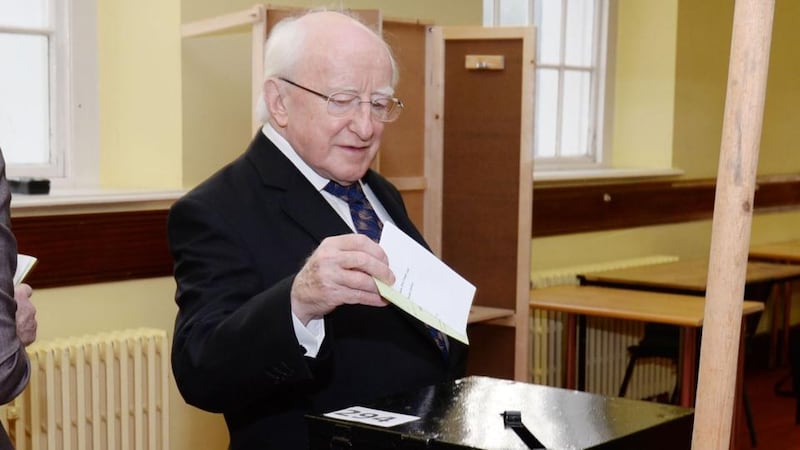Voting has closed in the two referendums on the abolition of the Seanad and a new Court of Civil Appeal. Turnout was low across the country and will struggle to exceed the low levels of last year’s referendum on Children’s rights.
Feedback obtained from TDs and Senators across the country showed wide variance between constituencies but many believed the turnout would exceed the 33.5 per cent for the children’s referendum but would not surpass 40 per cent.
Most said they expected the percentage turnout would be in the mid-to-high thirties by the time polling stations closed at 10pm tonight. Many said they expected it to be a little over 35 per cent. The final turnout will be known tomorrow.

There was widespread criticism of the two ballot papers which seemed to have caused confusion among voters in 6,000 centres. The ballot papers made reference only to the 32nd and 33rd amendments to the Constitution without stating in full the propositions.
A number of TDs, including Fine Gael chairman Charlie Flanagan, told The Irish Times voters were unsure what a Yes or a No vote meant. There were reports also of some voters not accepting the ballot paper for the second referendum.
Bad weather earlier in the day on the western seaboard may have affected turnout for a while but all constituencies were reporting low turnout by mid-afternoon, although there was a spike after 6pm as people returned from work.
For the children’s referendum polling took place on a Saturday in an experiment that was not considered a success. The choice of Friday may have boosted turnout somewhat, although there was agreement among politicians that voter engagement with the issues was low.
The turnout in Kenmare in Co Kerry was 33 per cent but only 16 per cent in Rathmore at teatime, according to Fianna Fáil Senator Mark Daly. In the south of Cork city, local TD Jerry Buttimer said that the turnout varied from a high of 55 per cent in Bishopstown to 27 per cent in Togher.
Percentage turnout in Meath East was in the late twenties at teatime, suggesting a 35 per cent final figure. In Dublin Central it was in the high 20s in the Dublin 7 postal district.
Louth Labour TD Gerald Nash was predicting a turnout of about 32 to 35 per cent in Drogheda. Mr Flanagan thought it would exceed 35 per cent in Co Laois. The counting of votes will begin in each constituency tomorrow morning with the final results being transmitted to the central count centre in Dublin Castle.
The returning officer is a senior official in the Department of the Environment Ríona Ní Fhlanghaile, who has served a similar role in recent referendums. The first tallies should be completed by mid-morning and indications of the final outcome should be known by early afternoon, unless it is very close.
The returning officer is expected to make the formal announcement on both referendums in late afternoon.
President Michael D Higgins and his wife Sabina Higgins were among the early voters and as they cast their votes at St Mary's Hospital Voting Centre, Phoenix Park, Dublin this morning.
Tánaiste Eamon Gilmore voted in Shankhill, Co Dublin this morning. Minister for Transport Leo Varadkar also voted in Castleknock. He tweeted: "Turnout up on Children's Ref but lower than Fiscal Treaty." Former Minister for Europe Lucinda Creighton TD also voted at Rathmines, Dublin.
If the Seanad referendum is passed, the Upper House will be abolished after the next General Election.
If the Court of Appeal referendum is passed, a new Court of Appeal will be set up at a level between the High Court and the Supreme Court.
Information leaflets have been distributed to the two million voting households in the State by the Referendum Commission. To access the commission's material on voting visit referendum2013.ie













